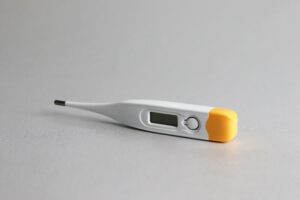What is Ovarian Torsion?


Ovarian torsion occurs when the ovary rotates, either completely or partially, hindering blood flow and causing acute abdominal pain. It is a rare condition, but is potentially very serious as, if left untreated, it can cause permanent damage to the ovary and infertility. As such, ovary torsion is considered to be a gynaecological emergency and treatment should be initiated as soon as possible.
The ovaries are a paired structure located either side of the lower abdomen. They play a fundamental role in reproduction and hormone production, including the dominant female sex hormones, oestrogen and progesterone. If a doctor suspects an issue with one or both of the ovaries he or she will likely use exploratory ultrasound and investigative laparoscopy (keyhole surgery) for diagnostic purposes.
What causes ovarian torsion?
Rotation of the ovaries can affect women of any age, from childhood to post-menopause, although the underlying causes vary according to age.
Younger patients will often have normal, healthy ovaries, but the ligaments that support them (the infundibulopelvic ligaments) will be elongated. Longer ligaments can cause the ovaries to rotate at a young age. Once a female reaches puberty, these ligaments naturally shorten, reducing the risk of ovarian torsion.
Post-puberty, women with healthy ovaries are unlikely to experience torsion. The risk increases with disrupted blood flow to the ovaries, which occurs when the veins supplying the pelvic organs become compressed, for example during pregnancy, or when the colon is distended.
Another significant risk factor for ovarian torsion is the presence of cysts or abnormal masses. Ovarian cysts are usually harmless, but they can cause the surrounding ligaments to rotate. This is more likely when the ovaries have multiple, large follicular cysts, which can occur following ovulation induction treatment, or in women with polycystic ovary syndrome. Studies have shown that larger ovarian growths correlate with an increased incidence of torsion. However, torsion is less likely with malignant masses, than with benign tumour growth. Ovarian cysts and benign tumour masses are most common in females of reproductive age and, therefore, this is the age group at most risk of experiencing ovarian torsion.
Diagnosis and treatment of ovarian torsion
The predominant symptoms of ovarian torsion include acute abdominal pain, alongside nausea and vomiting. Unfortunately the generic nature of these symptoms means that the condition often gets misdiagnosed as appendicitis, kidney inflammation (pyelonephritis) or kidney stones (nephrolithiasis). There are no known serum markers indicative of ovarian torsion; however, blood tests might still be used to identify tumour markers if a tumour is suspected.
Diagnosis of the condition can be challenging as direct visualisation of the ovaries and their associated ligaments is usually required. Even if masses are present, they are not always palpable from outside the body. Ultrasound scans can be used to assess arterial blood flow, but some women with torsion appear to have normal blood flow when scanned. Often surgery is the only way to definitively diagnose the condition.
At one time the treatment of choice for ovarian torsion was removal of the ovaries (oophorectomy). Today, however, doctors will usually attempt a more conservative approach, with a view to preserving ovarian function. Detorsion via laparoscopy is generally the preferred treatment approach; although, with this technique, retorsion is possible. To reduce the likelihood of retorsion, doctors may carry out simultaneous procedures, such as cyst removal, fixing of the ovary to surrounding tissue or shortening any elongated ligaments by plication. The specific approach taken will depend on many factors, including the patient’s age, their fertility status and what the suspected cause of their rotated ovary is. Women with malignant ovarian tumours will usually need to have their entire ovary removed.
Ovarian torsion can be a difficult condition to manage and there is no standardised approach, as there is with testicular torsion in males. Unlike the testes, the ovaries are intra-abdominal, meaning that other, nearby organs can be impacted by any treatment. The condition is also multifactorial, necessitating a more individualised treatment approach for each patient.
Nabta is reshaping women’s healthcare. We support women with their personal health journeys, from everyday wellbeing to the uniquely female experiences of fertility, pregnancy, and menopause.
Get in touch if you have any questions about this article or any aspect of women’s health. We’re here for you.
Sources:
- Ding, Dah-Ching, et al. “A Review of Ovary Torsion.” Tzu Chi Medical Journal, vol. 29, no. 3, 2017, pp. 143–147., doi:10.4103/tcmj.tcmj_55_17.
- Gibson, E, and H Mahdy. Anatomy, Abdomen and Pelvis, Ovary. StatPearls Publishing, 2019, https://www.ncbi.nlm.nih.gov/books/NBK545187/.
- Mehmetoğlu, Feride. “How Can the Risk of Ovarian Retorsion Be Reduced?” Journal of Medical Case Reports, vol. 12, no. 1, 4 July 2018, doi:10.1186/s13256-018-1677-0.
- Robertson, Jennifer J., et al. “Myths in the Evaluation and Management of Ovarian Torsion.” The Journal of Emergency Medicine, vol. 52, no. 4, Apr. 2017, pp. 449–456., doi:10.1016/j.jemermed.2016.11.012










































